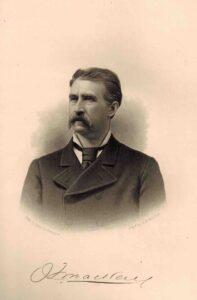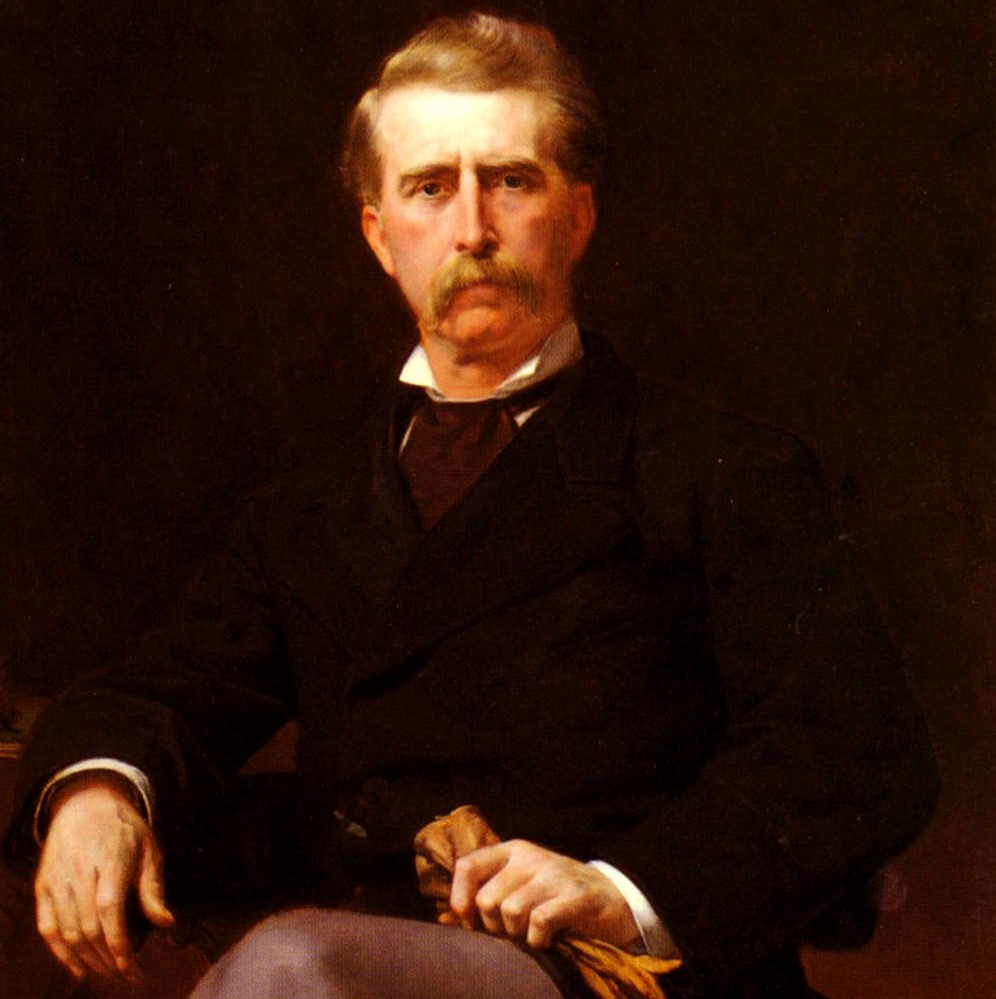
William Shakespeare observed, “The evil that men do lives after them; The good is oft interred with their bones.” It speaks to the ironic tendency for society to notarize, even glorify, the darkest aspects of humanity while ignoring the noble. Nowhere is this clearer than in the case of Irish American John Mackay, the “Bonanza King.”
John Mackay (pronounced Mackee) was born on November 28, 1831, on the outskirts of Dublin in the appalling poverty of pre-famine Ireland. In 1840, when Mackay was nine years old, the family emigrated to New York City, settling in the notorious Five Points section of the city. At first, it seemed that the family was prospering, they were able to scrape together enough that young John was able to attend school at a time when only half of the Irish children living in New York received any formal education. However, disaster struck in 1842 when Mackay’s father died suddenly, forcing young John to quit school to support his mother and sister. Mackay often would remark in later life that his greatest regret was not having completed a formal education.
Mackay started working as a newsboy, at the time a grueling and unsparing job. Newsboys had to buy their papers in advance and could not return any that went unsold, which could quickly erase a day’s work. Fighting for readers was often literal. It would have been particularly hard for Mackay who throughout his life fought a terrible stammer, but the boy developed a habit of letting his hard work speak for him. Mackay eventually secured a position as an apprentice ship’s carpenter; a testament to his determination as the New York shipbuilding industry of mid-19th century rarely employed the Irish.
The event that would change Mackay’s life occurred in 1848 with the discovery of gold in California. Despite the risks and hardships, prospecting for gold offered the chance to go from working for mere subsistence to improving one’s life. Like thousands of other young men of the time, Mackay left New York with nothing but a strong will supported by a strong back.

In the goldfields of California, Mackay developed a legendary reputation for hard work; a fellow miner would later reminisce, “Mackay worked like the devil and made me work the same way.” Nevertheless, after eight years in California Mackay had little to show for his efforts. Word filtered through the camps of a new strike in the Utah territories (present-day Nevada) of the vast silver and gold deposit that would be known as “The Comstock Lode.” With fellow Irishman and future partner Jack O’Brien, Mackay walked over one hundred miles and climbed over twenty-three hundred feet crossing the Sierra Nevada mountains to arrive in the mining camp without a nickel to his name to start again.
Mackay started as a common miner at $4 per day. For several years he crammed two days of backbreaking labor into a single day, working one full shift to earn the money he needed to survive and then a second shift in exchange for “feet,” a share in the mine’s ownership. Through his grueling toil and expertise in mining gained from hands-on experience and hours of study, Mackay gradually amassed some capital and acquired stakes in better and better mines. In 1865, MacKay acquired a majority share of an obscure mine called the Kentuck, which had been written off as unproductive. Mackay believed otherwise. Mackay invested his savings acquired through a life of grueling labor and every penny he could borrow in the Kentuck. After a year of mining the Kentuck with little to show, Mackay was teetering on the edge of bankruptcy, but on New Year’s Day, 1866, he hit a ten-foot-wide vein of gold and silver 250 feet below the surface. Over the next two years, the “unproductive Kentuck” would yield Mackay $1.6 million worth of gold and silver in the day’s currency, approximately $375 million in today’s dollars.

Despite having acquired more wealth than an improvised newsboy from the Five Points could dream of, Mackay still had a love of work and mining. In 1873, Mackay and his three fellow Irish American partners hit “the Big Bonanza” – a strike that still holds the record as the most concentrated ore body in history. In the silver and goldfields of Nevada, Mackay had gone from earning $4 a day to $450,000 per month, making Mackay and his partners the richest men in the world. Mackay was nicknamed “the Bonanza King,” a title the modest McKay shunned.
However, the accumulation of wealth was not an end in itself for Mackay. His miners were the best paid in the world, and he was renowned for always dealing fairly with them. When a depression created a surplus of labor, a consortium of mine owners attempted to exploit the situation by conspiring to reduce the miner’s wages to $3.50 an hour; McKay would have none of it. He stated, “I always received $4.00 when I worked in the mines and when I cannot pay that I will go out of business.” He would continue to drive himself to this mines in a simple one-horse wagon rather than an elegant coach, and in winter was never in too much of a hurry to stop to allow local children to hitch on their sleds so that he could give them a ride up a hill. In the slang of the Comstock miners when something was of exceptional quality it was referred to as “the John Mackay.”
Always a believer in free enterprise, in later life Mackay took on “the most hated man in America” Jay Gould, who had a monopoly on transatlantic telegraph communications for his Western Union company. Mackay broke his monopoly by forming the Commercial Cable Company and laying his own pair of rival transatlantic telegraph cables at tremendous cost. In the process, Mackay incentivized and aided in his employees’ purchase of company stock, one of the first business leaders to do so. When he built the office of his new cable company in New York City at the intersection of Murray Street and Broadway across from City Hall, he had his desk positioned so he could see his childhood home in the Five Points—a daily reminder of how far he’d come..

Mackay’s philanthropy and generosity were legendary, but in keeping with his character done quietly and without pretense. Mackay gave generously to the Catholic Church and endowed the Catholic orphan asylum in Virginia City, Nevada. When former President Grant was nearly penniless due to losing his investments in a Wall Street scandal, Mackay quietly helped him in the same way as he quietly helped so many old miners of his acquaintance. He endowed the school of mines at the University of Nevada
When Mackay died in 1902, The Salt Lake City Tribune said of this one-time improvised Irish immigrant that “of all the millionaires of this country, no one was more thoroughly American than Mr. Mackay, and no one among them derived his fortune more legitimately.”
It’s a grave injustice that the memory of John Mackay has faded—especially when his example is so badly needed today. Unlike the robber barons of his era—Rockefeller, Carnegie, Stanford, Huntington—Mackay didn’t need to endow libraries, universities, and foundations to atone for how his fortune was made. Mackay built his wealth honestly and treated people fairly his entire life. When asked for his advice on success, he always said: “Son, never lose your good name.” He never did.
And that’s worth remembering.